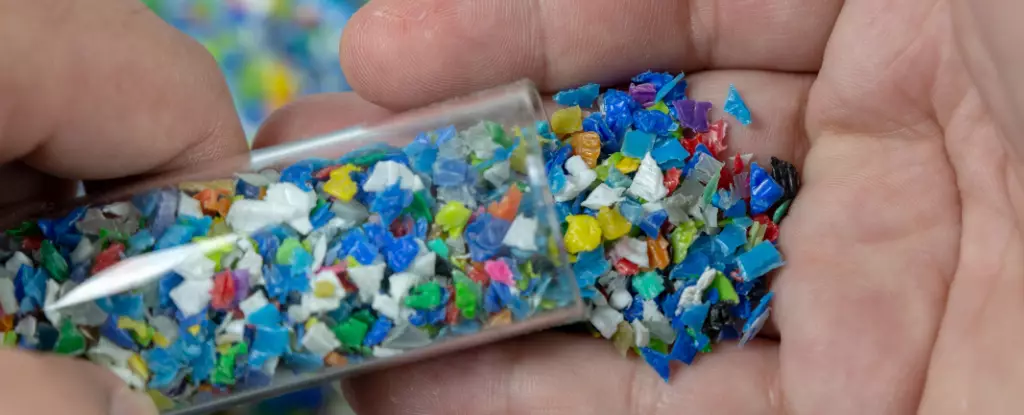In our contemporary society, the infiltration of plastics and their derivatives has become so pervasive that evading exposure seems almost futile for the average person. According to recent findings, individuals residing in urban areas of southern California experience shockingly high levels of exposure to plasticizers, specifically chemicals that are utilized to enhance the flexibility of plastic products. David Volz, a toxicologist affiliated with the University of California, Riverside, stresses that regardless of an individual’s background or location, consistent and elevated encounters with these chemicals are simply a part of daily life.
While the toxicity of all plasticizers remains uncertain, a subset of these compounds has been correlated with an array of health complications ranging from reproductive issues to heightened cancer risks. In a proactive legislative move, California recently sought to prohibit the use of di (2-ethylhexyl) phthalate (DEHP) in critical medical equipment like IV bags and tubing due to its hazardous profile. DEHP has been under scrutiny for its potential link to serious health conditions, particularly concerning cancer risks and the impact on fetal and childhood development. Since 2009, restrictions on DEHP in children’s products have been enforced in California, yet the latest investigations reveal alarmingly sustained levels of this and similar dangerous additives in the local populace.
Research Findings: A Deep Dive
The groundbreaking research conducted between 2019 and 2020 involved 137 University of California, Riverside students who donned silicone wristbands to track their exposure to harmful chemicals. The study aimed to measure the absorption of ten known plasticizers over a five-day period. The results astonished researchers and participants alike, revealing extraordinarily high concentrations of potentially harmful pollutants absorbed by the wristbands. “We weren’t expecting that,” Volz admits, reflecting on the team’s unexpected findings.
This exposure is not confined to California alone; similar levels of plasticizer absorption have been recorded on the United States’ east coast. In an alarming statistic, 94 to 97 percent of the absorbed plasticizers were identified as DiNP (di-isononyl phthalate), DEHP, and DEHT, an alternative substance that has emerged as a purportedly safer option though its long-term effects remain largely undetermined. This heightened concentration of these compounds raises urgent concerns, particularly in urban settings characterized by dense populations.
The Role of Phthalates in Consumer Products
Phthalates, the class of chemicals that includes both DEHP and DiNP, are predominate in various consumer goods, from food packaging to personal care products. The routes of exposure are diverse; individuals may ingest these chemicals, absorb them through their skin, or inhale them. Despite their quick disintegration within the human body, phthalates have become commonplace in the urine of the American population, highlighting the challenge of reducing exposure in modern living environments. The recent introduction of DEHT aims to mitigate health risks associated with phthalates, yet researchers caution that the toxicological profiles of such substitutes are still nebulous.
Raising the alarm over continuous exposure to these toxic substances, researchers have prompted a broader inquiry into the health implications stemming from prevalent plasticizers such as DiNP, DEHP, and DEHT within densely populated regions. This concern aligns with investigations by the US Environmental Protection Agency (EPA), which is revisiting the safety profiles of common phthalates in light of emerging data linking them to serious health risks, including carcinogenicity. Preliminary findings from the EPA’s review suggest that DiNP may induce liver damage and pose cancer risks at elevated exposure levels.
The statements from the EPA underscore the hazardous nature of phthalates and the widespread potential for human and environmental exposure to these ubiquitous chemicals. As the agency notes, phthalates are embedded in many industrial and consumer goods, further complicating the public health narrative surrounding these components.
As the prevalence of plasticizers in daily life continues to raise alarms, the need for public awareness and regulatory action becomes increasingly crucial. The convergence of scientific scrutiny and legislative efforts signifies a vital step toward safeguarding environmental and public health. It is imperative that citizens stay informed about the toxicology of the materials that permeate their surroundings. Enhanced regulations and innovations in safer alternatives may pave the way for a healthier future, but action must be taken soon to address the pervasive threat posed by plastics and their chemicals. In this ongoing battle against plasticization, knowledge and proactive measures will be our most potent weapons.


Leave a Reply